MENU
The Electronic Scholarly Publishing Project: Providing access to classic scientific papers and other scholarly materials, since 1993. More About: ESP | OUR CONTENT | THIS WEBSITE | WHAT'S NEW | WHAT'S HOT
Comparative Timelines
The ESP Timeline (one of the site's most popular features) has been completely updated to allow the user to select (using the timeline controls above each column) different topics for the left and right sides of the display.
Select:
New Left Column
New Left Column
Dates
Decade
New Right Column
New Right Column
 R. A. Fisher publishes Genetical Theory of Natural Selection, a formal analysis of the mathematics of selection.
R. A. Fisher publishes Genetical Theory of Natural Selection, a formal analysis of the mathematics of selection.
1930
 R. A. Fisher publishes Genetical Theory of Natural Selection, a formal analysis of the mathematics of selection.
R. A. Fisher publishes Genetical Theory of Natural Selection, a formal analysis of the mathematics of selection.
Themistocles Zammit publishes Prehistoric Malta: The Tarxien Temples about excavations showing fossil sea urchins in Bronze Age temples.
(no entry for this year)
1931
C. Stern, and independently H. B. Creighton and B. McClintock, provide the cytological proof of crossing over.
The highly influential paleobotanist Sir Albert Charles Seward rejects the biologic interpretation of Cryptozoon fossils (stromatolites). This rejection will become known among paleontologists as "Seward's folly."
(no entry for this year)
1932
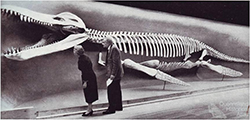 A Harvard expedition to Australia collects Kronosaurus queenslandicus, a 135-million-year-old marine reptile fossil with a 9- foot skull and banana-sized teeth. Researchers excavate the fossil from a limestone quarry with the aid of explosives.
A Harvard expedition to Australia collects Kronosaurus queenslandicus, a 135-million-year-old marine reptile fossil with a 9- foot skull and banana-sized teeth. Researchers excavate the fossil from a limestone quarry with the aid of explosives.
Fossil diggers discover a 25-million-year-old toothed, dwarf whale in Australia. Seven years later it will be named Mammalodon. More than 70 years later, it will be described as a "bottom-feeding mud-sucker."
Robert Broom publishes The Coming of Man: Was it Accident or Design? arguing that evolution is really driven by spiritual agencies, some with conflicting priorities, and that mankind is the ultimate aim of all evolution.
1933
Robert Broom publishes The Coming of Man: Was it Accident or Design? arguing that evolution is really driven by spiritual agencies, some with conflicting priorities, and that mankind is the ultimate aim of all evolution.
 Barbara McClintock demonstrates in maize that a single exchange within the inversion loop of a paracentric inversion heterozygote generates an acentric and a dicentric chromatid.
Barbara McClintock demonstrates in maize that a single exchange within the inversion loop of a paracentric inversion heterozygote generates an acentric and a dicentric chromatid.
T. S. Painter initiates cytogenetic studies on the salivary gland chromosomes of Drosophila.
(no entry for this year)
1934
With funding from Sinclair Oil, Barnum Brown begins excavating in Wyoming's Howe Quarry. His finds will lead to the green dinosaur logo for Sinclair's gas stations. Many of them will simply be named "Dino."
(no entry for this year)
1935
 C. B. Bridges publishes the salivary gland chromosome maps for Drosophila melanogaster.
C. B. Bridges publishes the salivary gland chromosome maps for Drosophila melanogaster.
G. W. Beadle and B. Ephrussi and A. Kuhn and A. Butenandt work out the biochemical genetics of eye-pigment synthesis in Drosophila and Ephestia, respectively.
 J. B. S. Haldane is the first to calculate the spontaneous mutation frequency of a human gene.
J. B. S. Haldane is the first to calculate the spontaneous mutation frequency of a human gene.
M. Baudouin describes more than 80 fossil sea urchins drilled for use as jewelry, some worked as long as 35,000 years ago.
(no entry for this year)
1936
A. H. Sturtevant and T. Dobzhansky publish the first account of the use of inversions in constructing a chromosomal phylogenetic tree.
Robert Broom finds the first skull of an adult australopithecine near Johannesburg.
T. Dobzhansky publishes Genetics and the Origin of Species — a milestone in evolutionary genetics.
1937
T. Dobzhansky publishes Genetics and the Origin of Species — a milestone in evolutionary genetics.
(no entry for this year)
1938
 Fishermen find a coelacanth, a fish long believed to be extinct, off the coast of South Africa. Margaret Courtney-Latimer, a curator at the East London Museum in South Africa, keeps the fish preserved long enough for its identity to be confirmed by ichthyologist J.L.B. Smith.
Fishermen find a coelacanth, a fish long believed to be extinct, off the coast of South Africa. Margaret Courtney-Latimer, a curator at the East London Museum in South Africa, keeps the fish preserved long enough for its identity to be confirmed by ichthyologist J.L.B. Smith.
(no entry for this year)
1939
E. L. Ellis and M. Delbrück perform studies on coliphage growth that mark the beginning of modem phage work. They devise the "one-step growth" experiment, which demonstrates that after the phage adsorbs onto the bacterium, it replicates within the bacterium during the "latent period," and finally the progeny are released in a "burst."
About 200 worked ivory fragments, roughly 32,000 years old, are found in the Hohlenstein-Stadel Cave in Germany. Three decades later, the pieces will be reassembled as statue of a lion-headed man.
ESP Quick Facts
ESP Origins
In the early 1990's, Robert Robbins was a faculty member at Johns Hopkins, where he directed the informatics core of GDB — the human gene-mapping database of the international human genome project. To share papers with colleagues around the world, he set up a small paper-sharing section on his personal web page. This small project evolved into The Electronic Scholarly Publishing Project.
ESP Support
In 1995, Robbins became the VP/IT of the Fred Hutchinson Cancer Research Center in Seattle, WA. Soon after arriving in Seattle, Robbins secured funding, through the ELSI component of the US Human Genome Project, to create the original ESP.ORG web site, with the formal goal of providing free, world-wide access to the literature of classical genetics.
ESP Rationale
Although the methods of molecular biology can seem almost magical to the uninitiated, the original techniques of classical genetics are readily appreciated by one and all: cross individuals that differ in some inherited trait, collect all of the progeny, score their attributes, and propose mechanisms to explain the patterns of inheritance observed.
ESP Goal
In reading the early works of classical genetics, one is drawn, almost inexorably, into ever more complex models, until molecular explanations begin to seem both necessary and natural. At that point, the tools for understanding genome research are at hand. Assisting readers reach this point was the original goal of The Electronic Scholarly Publishing Project.
ESP Usage
Usage of the site grew rapidly and has remained high. Faculty began to use the site for their assigned readings. Other on-line publishers, ranging from The New York Times to Nature referenced ESP materials in their own publications. Nobel laureates (e.g., Joshua Lederberg) regularly used the site and even wrote to suggest changes and improvements.
ESP Content
When the site began, no journals were making their early content available in digital format. As a result, ESP was obliged to digitize classic literature before it could be made available. For many important papers — such as Mendel's original paper or the first genetic map — ESP had to produce entirely new typeset versions of the works, if they were to be available in a high-quality format.
ESP Help
Early support from the DOE component of the Human Genome Project was critically important for getting the ESP project on a firm foundation. Since that funding ended (nearly 20 years ago), the project has been operated as a purely volunteer effort. Anyone wishing to assist in these efforts should send an email to Robbins.
ESP Plans
With the development of methods for adding typeset side notes to PDF files, the ESP project now plans to add annotated versions of some classical papers to its holdings. We also plan to add new reference and pedagogical material. We have already started providing regularly updated, comprehensive bibliographies to the ESP.ORG site.
ESP Picks from Around the Web (updated 06 MAR 2017 )
Old Science
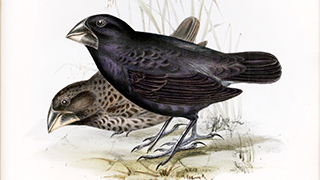
Weird Science
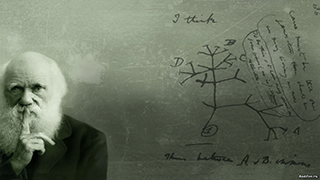
Treating Disease with Fecal Transplantation
Fossils of miniature humans (hobbits) discovered in Indonesia
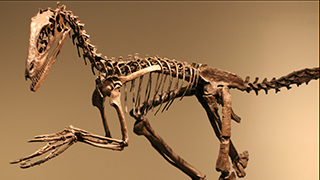
Dinosaur tail, complete with feathers, found preserved in amber.
Astronomy
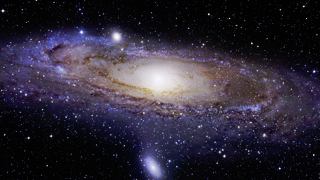
Mysterious fast radio burst (FRB) detected in the distant universe.